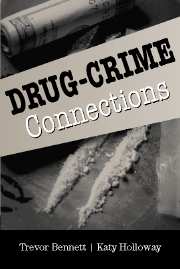3 - Drug Misuse Among Arrestees
Published online by Cambridge University Press: 18 December 2009
Summary
INTRODUCTION
Several methods of monitoring drug misuse already exist, including surveys of the general population, medical records of users entering treatment, and official statistics on prosecutions for drug offenses. However, each of these measures has problems in providing an accurate estimation of drug misuse. General population surveys do not cover the entire population and tend to omit difficult-to-reach groups, such as homeless people and those currently living in institutions. They also exclude those who are criminally active who might decline to be interviewed and those in custody (either in prison or in police cells) at the time of the survey. Similarly, medical records and official statistics do not cover the entire population as they exclude drug users who do not present for treatment and those not convicted of a drug offense. On each occasion, the omitted groups are likely to include the most problematic drug users. It is important in assessing drug-use patterns that monitoring covers a broad spectrum of the population and, therefore, that information is available on the more difficult-to-reach groups and more problematic drug users.
This chapter aims to shed light on drug misuse among one of these difficult-to-reach groups. The following sections examine what is known about drug misuse among arrestees from the results of the New English and Welsh Arrestee Drug Abuse Monitoring (NEW-ADAM) surveys. In particular, it looks at the proportion of arrestees that use various types of drugs, the rates of drug use among drug users, and weekly expenditure on drugs.
- Type
- Chapter
- Information
- Drug-Crime Connections , pp. 37 - 59Publisher: Cambridge University PressPrint publication year: 2007

